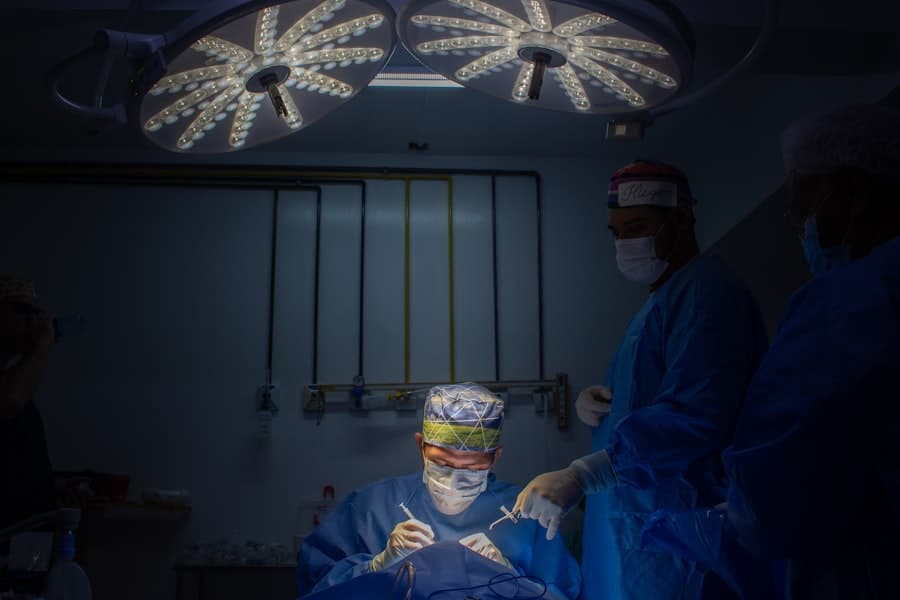Augmented Reality (AR) has emerged as a transformative technology in various fields, and its application in education, particularly in virtual science labs, is gaining significant traction. By overlaying digital information onto the physical world, AR creates an interactive learning environment that enhances the educational experience. In the context of science education, where hands-on experimentation is crucial, AR provides a unique solution to bridge the gap between theoretical knowledge and practical application.
This technology allows students to visualize complex scientific concepts and engage with them in a more meaningful way, fostering a deeper understanding of the subject matter. The integration of AR into virtual science labs is not merely a trend; it represents a paradigm shift in how science is taught and learned. Traditional methods often rely on static textbooks and limited laboratory access, which can hinder students’ ability to grasp intricate scientific principles.
AR addresses these limitations by enabling immersive experiences that can simulate real-world laboratory conditions. As educational institutions increasingly adopt digital tools, the potential for AR to revolutionize science education becomes more apparent, paving the way for innovative teaching methodologies that cater to diverse learning styles.
Key Takeaways
- AR in virtual science labs enhances the learning experience by providing interactive and immersive simulations.
- The benefits of using AR in virtual science labs include increased student engagement, improved understanding of complex concepts, and the ability to conduct experiments in a safe and cost-effective manner.
- AR enhances hands-on learning in virtual science labs by allowing students to manipulate virtual objects, visualize abstract concepts, and collaborate with peers in real-time.
- Examples of AR applications in virtual science labs include virtual dissections, interactive periodic tables, and 3D molecule modeling.
- Overcoming challenges of implementing AR in virtual science labs requires addressing technical limitations, ensuring accessibility for all students, and providing adequate training for educators.
The Benefits of Using AR in Virtual Science Labs
The benefits of incorporating AR into virtual science labs are manifold, significantly enhancing both teaching and learning experiences. One of the most notable advantages is the ability to visualize abstract concepts that are often difficult to comprehend through traditional means.
This level of engagement not only aids retention but also stimulates curiosity and encourages further exploration of scientific topics. Moreover, AR facilitates collaborative learning experiences that transcend geographical boundaries. Students can work together in virtual environments, conducting experiments and sharing findings in real-time, regardless of their physical locations.
This collaborative aspect fosters teamwork and communication skills, essential competencies in today’s interconnected world. Additionally, AR can provide instant feedback and assessments, allowing educators to tailor their instruction based on individual student needs. This personalized approach ensures that learners receive the support they require to succeed, ultimately leading to improved academic outcomes.
How AR Enhances Hands-On Learning in Virtual Science Labs

Hands-on learning is a cornerstone of effective science education, as it allows students to apply theoretical knowledge in practical scenarios. AR enhances this experiential learning by providing interactive simulations that mimic real laboratory environments. For example, students can conduct virtual chemistry experiments where they mix substances and observe reactions without the risks associated with handling hazardous materials.
This safe environment encourages experimentation and exploration, empowering students to learn from their mistakes without fear of negative consequences. Furthermore, AR can simulate complex processes that may be impractical or impossible to replicate in a traditional lab setting. For instance, students studying biology can observe cellular processes like mitosis or photosynthesis in real-time through AR overlays.
These visualizations help demystify intricate biological mechanisms, making them more accessible and understandable. By engaging with these dynamic representations, students develop critical thinking skills as they analyze data and draw conclusions based on their observations.
Examples of AR Applications in Virtual Science Labs
Numerous applications of AR in virtual science labs illustrate its potential to enhance educational experiences. One prominent example is the use of AR in anatomy education. Applications like “Anatomy 4D” allow students to visualize human anatomy by overlaying 3D models onto physical textbooks or printed images.
This interactive approach enables learners to explore the human body in detail, rotating and dissecting virtual organs to gain a comprehensive understanding of their functions. In chemistry education, platforms such as “Labster” offer virtual lab simulations that incorporate AR elements. Students can perform experiments involving chemical reactions, titrations, and other procedures while receiving real-time guidance and feedback.
These simulations not only provide a safe space for experimentation but also allow students to repeat experiments as needed, reinforcing their understanding through practice. Another innovative application is “Google Expeditions,” which offers immersive field trips to various scientific locations around the globe. Students can explore ecosystems, geological formations, or even outer space through AR experiences that bring distant environments into their classrooms.
This exposure broadens their understanding of scientific concepts by placing them within real-world contexts.
Overcoming Challenges of Implementing AR in Virtual Science Labs
Despite the numerous advantages of AR in virtual science labs, several challenges must be addressed for successful implementation. One significant hurdle is the technological infrastructure required to support AR applications. Schools and educational institutions may lack the necessary hardware or software resources, which can hinder the adoption of these innovative tools.
Ensuring that all students have access to compatible devices is crucial for equitable learning opportunities. Additionally, educators may require training to effectively integrate AR into their teaching practices. Many teachers are accustomed to traditional methods and may feel overwhelmed by the prospect of adopting new technologies.
Professional development programs focused on AR can equip educators with the skills and confidence needed to utilize these tools effectively. Furthermore, developing high-quality AR content that aligns with curriculum standards is essential for maximizing the educational impact of these applications.
The Future of AR in Virtual Science Labs

Personalized Learning Experiences
The integration of artificial intelligence (AI) with AR could further enhance personalized learning experiences by adapting content based on individual student performance and preferences.
Collaborative Efforts and Customized Applications
Moreover, as more educators recognize the benefits of immersive learning experiences, there will likely be a surge in collaborative efforts between technology developers and educational institutions. This partnership can lead to the creation of tailored AR applications that address specific curriculum needs and learning objectives.
Gamification and Interactive Learning
The potential for gamification within AR environments also presents exciting opportunities for engaging students through interactive challenges and simulations that promote critical thinking and problem-solving skills.
Tips for Integrating AR into Virtual Science Labs
Successfully integrating AR into virtual science labs requires careful planning and consideration. One effective strategy is to start small by piloting specific AR applications within existing curricula before scaling up implementation. This approach allows educators to assess the effectiveness of the technology and make necessary adjustments based on student feedback and learning outcomes.
Collaboration among educators is also vital for sharing best practices and resources related to AR integration. Establishing professional learning communities where teachers can exchange ideas and experiences can foster a culture of innovation within schools. Additionally, involving students in the selection process of AR tools can enhance engagement and ensure that the chosen applications resonate with their interests and learning styles.
Furthermore, it is essential to continuously evaluate the impact of AR on student learning outcomes. Collecting data on student performance and engagement levels can provide valuable insights into the effectiveness of AR applications and inform future instructional decisions.
The Impact of AR on the Future of Science Education
The integration of Augmented Reality into virtual science labs represents a significant advancement in science education, offering innovative ways for students to engage with complex concepts and conduct experiments safely.
By overcoming challenges related to implementation and ensuring equitable access to resources, educators can harness the full potential of AR to transform science education for future generations.
As we look ahead, it is clear that AR will play a pivotal role in shaping how science is taught and learned. The ability to visualize abstract concepts, conduct experiments virtually, and collaborate with peers across distances will redefine traditional educational paradigms. Ultimately, the impact of AR on science education will extend beyond individual classrooms, influencing how society perceives and engages with scientific inquiry as a whole.
A related article discussing the importance of software testing in the development process can be found at this link. Software testing is crucial in ensuring the functionality and reliability of virtual classroom tools, including AR technology used in science labs. By understanding the best practices and techniques in software testing, developers can create more effective and efficient virtual learning experiences for students.
FAQs
What is AR?
AR stands for Augmented Reality, which is a technology that superimposes digital information such as images, videos, or 3D models onto the real world.
How is AR being used in science labs in virtual classrooms?
AR is being used in science labs in virtual classrooms to enhance the learning experience by allowing students to interact with virtual 3D models of scientific concepts and experiments. This provides a more immersive and engaging learning experience compared to traditional methods.
What are the benefits of using AR in science labs in virtual classrooms?
Some of the benefits of using AR in science labs in virtual classrooms include increased student engagement, improved understanding of complex scientific concepts, and the ability to conduct virtual experiments that may not be feasible in a traditional classroom setting.
What are some examples of how AR is enhancing science labs in virtual classrooms?
Examples of how AR is enhancing science labs in virtual classrooms include allowing students to virtually dissect animals, explore the human body in 3D, and simulate chemical reactions and physics experiments.
What are the limitations of using AR in science labs in virtual classrooms?
Some limitations of using AR in science labs in virtual classrooms include the need for access to AR-enabled devices, potential technical issues, and the requirement for educators to have the necessary training to effectively integrate AR into their teaching.

